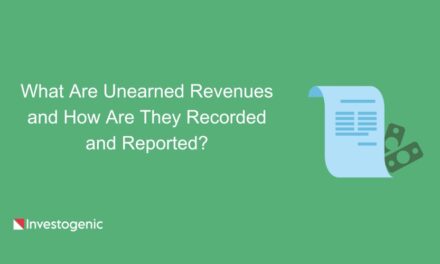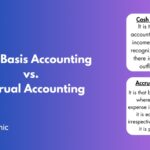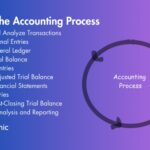
What is CMA, and how is it prepared?

A CMA is a financial report used by lending institutions like banks before lending. The primary purpose is to appraise and analyze the company’s financial position. CMAs are commonly used in commercial lending, particularly for larger or more complex loans.
What is CMA?
A CMA, or Credit Monitoring Arrangement, report shows a business’s projected and past financial performance. Through this, banks assess the financial soundness of a company. CMA data is based on the business’s audited, provisional, or projected financial statements.
Purpose of the CMA
For lender: A Credit Monitoring Arrangement aims to mitigate credit risk for the lender by proactively identifying any deterioration in the borrower’s financial condition or performance. By closely monitoring the borrower’s creditworthiness, the lender can take appropriate actions, such as initiating discussions on loan restructuring, enforcing loan provisions, or providing additional support, if necessary.
For the borrower, a Credit Monitoring Arrangement serves as a mechanism to maintain a strong relationship with the lender and demonstrate transparency and accountability. It also allows the borrower to receive guidance and support from the lender in managing its financial affairs effectively.
How to prepare a CMA for submission to a bank
Usually, for a CMA report, we have to provide five years of comparative financial statements. 2 Years of audited data, 1 Year of provisional data, and 2 Years of Projections based on realistic data In preparing a CMA report, ratio analysis plays a vital role.
Care must be taken in the preparation of the CMA report. The acceptance of a loan application is primarily based on these financial metrics. The Manufacturing and Trading units also present CMA data in slightly different ways. As a result, for Manufacturing units, we need specific additional inputs.
The CMA report is prepared in different forms, or as we say, sections. These forms are as follows:
- Form-I: Particulars of Limits and Information about Associate Companies
- Form-II: Operating Statement
- Form-III:
- Analysis of Balance Sheet – Liabilities
- Analysis of Balance Sheet – Assets
- Form-IV: Comparative Statement of Current Assets & Current Liabilities
- Form-V: Maximum Permissible Bank Finance for Working Capital
- Form-VI: Funds Flow Statement
Form-I: Particulars of Limits and Information about Associate Companies
We will start preparing the CMA report by describing the details of the boundaries and information about the affiliates. In this form, we describe the limits of all banks and financial institutions as of the date of application. Following this, we also provide information about associate companies, including details about companies, firms, or entities in which directors, partners, proprietors, and their family members or the Borrower Company are directors, partners, or proprietors. I am associated with or have given guarantees to other entities.
Form II: Operating Statement
We will then prepare a comparative statement of profit and loss in Form II: Operating Statement. In this, we provide details about gross income (income from sales and other income), cost of production and cost of sales, and net profit.
What is an Operating Statement?
An Operating Statement is a financial statement businesses use to report revenues, cost of goods sold, operating expenses, operating profit, non-operating expenses, and net income (loss). The statement of operations is also known as an income or profit and loss statement.
Form III: Analysis of the Balance Sheet
Form III: Analysis of the Balance Sheet – Liabilities
Next, we prepare a comparative balance sheet. This section is divided into two parts: liabilities and assets. We first provide details about the liabilities owned by the business, such as current liabilities (short-term borrowings, other current liabilities, and provisions) and term liabilities (debentures (maturing after 1 year), preference shares (after 1 year Redeemable), Term loans (Repayable after 1 year), Deferred Payment credits (Repayable after 1 year), Fixed deposits (Repayable after 1 year), Unsecured Loans, etc.).
Form III: Analysis of the Balance Sheet – Assets
In this section, we give a comparative statement of the assets of the business, such as current assets (cash and bank balances, other than short-term investments, deferred and receivables other than exports [including bills purchased and discounted by bankers], and export receivables [This includes bills purchased or paid by bankers], inventories, advances to suppliers of raw materials, stores, and spares, and taxes paid in advance), and non-current assets (fixed assets, investments, and other non-current assets).
In this form, we calculate the net worth of the company, Net working capital, etc. for analysis purposes.
Form IV: Comparative Statement of Current Assets and Current Liabilities
In this form, we present the comparative statement of current assets and current liabilities. In the part on current assets, we provide details about the current assets of the business, but here we give the details of raw materials in different categories like imported, indigenous, stock in process, finished goods, and other consumable spares including imported and indigenous.
Form-V: Maximum Permissible Bank Finance for Working Capital
We will use this form to calculate the maximum permissible bank financing for working capital. In this form, we calculate the working capital gap, minimum stipulated net working capital, and actual or estimated net working capital [NWC]. So that ultimately, we will arrive at the conclusion of maximum permissible bank finance.
Form VI: Fund Flow Statement
This form is for a fund flow statement. A funds flow statement is a statement that comprises the inflows and outflows of funds. It includes the sources of funds and the application for the particular period.
We analyze the company’s working capital changes through its funds’ flow statement. The statement helps in determining how the funds are being used. As a result, analysts can assess the company’s cash flow in the future.
Summary of Financial Statements for Ratio Analysis
Next, we’ll summarize the financial statements that we’ll use for ratio analysis. Here, we include both the income statement and balance sheet of the business in the financial statement.
What are financial statements?
Financial statements are written records that show the business activities and financial performance of a business. This includes the balance sheet, income statement, statement of cash flows, and statement of changes in equity.
Ratio Analysis
Next, we will analyze the financial statement with different types of ratios, like:
- Long-term solvency ratios: Debt equity ratio, Net Worth to Total Assets Ratio, Debt to Net Worth Ratio, Capital Gearing Ratio, Fixed Assets to long-term funds, Propriety Ratio, Interest Coverage, and Debt Service Coverage
- Short-term Solvency Ratio: Current Ratio, Quick Ratio, Liquid Ratio, Acid Test Ratio, and Absolute Liquid Ratio
- Profitability Ratios: Return on Capital Employed or Return on Investment, Gross Profit Margin, Net Profit Margin, Cash Profit Ratio, Return on Net Worth, Operating Profit (before interest), Margin, and Operating Profit (after interest) Margin
- Activity Ratios: Inventory Turnover Ratio, Inventory Turnover Period, Debtors Turnover Ratio, Debtors Turnover Period, Creditors Turnover Ratio, Creditors Turnover Period, Fixed Assets Turnover Ratio, Assets Turnover Ratio, Working Capital Turnover Ratio, and Sales to Capital Employed
- Operating Ratios: Domestic Sales Proportion, Export Sales Proportion, Material Cost Ratio, Consumables Cost Ratio, Direct Labour Cost Ratio, Other Direct Cash Overheads Cost Ratio, Total Direct Cost Ratio [excl. material and consumables], Total Direct Cost Ratio [incl. material and consumables], Indirect Cost Ratio, Interest Cost Ratio, and Operating Cost Ratio.
Statement of Change in Working Capital
This statement describes the change in working capital during the accounting period. The change in working capital depends on the increase or decrease in current assets or current liabilities.
The following important factors should be kept in mind while creating a statement of changes in working capital:
- An increase in current assets and a decrease in current liabilities increase working capital.
- A decrease in current assets and an increase in current liabilities decrease working capital.
Learn more: What is MSOD, and how is it prepared?
How to Prepare a Projected Summary of the Next 2 Years
When we prepare a projected summary of the next two years, we need to pay enough attention. The projected summary for the next 2 years will depend on certain assumptions, such as orders in hand, economic conditions, and future government policies that may affect our business. We consider the figures for the next 2 years; these figures are estimated on the basis of our last 3 years’ figures. If there is a large variation in any figure, we will have to explain it in our CMA report.
As we discussed above, the main objective of the CMA report is ratio analysis. We calculate various ratios in our CMA report that are very useful for the purpose of analysis, and presenting them in a comparative format will definitely help us present realistic data in front of our investors or bankers.
How did the Bank Approve our Loan Application?
Banks use the above ratios for the purpose of loan application approval; they already have standard benchmark ratios against which to compare. The loan application may be rejected if the ratios are not within the acceptable range. After analyzing the financial data, bankers generally use the Nayak Committee Turnover Method or the Tandon Lending Method to finalize the loan sanction limit.


























